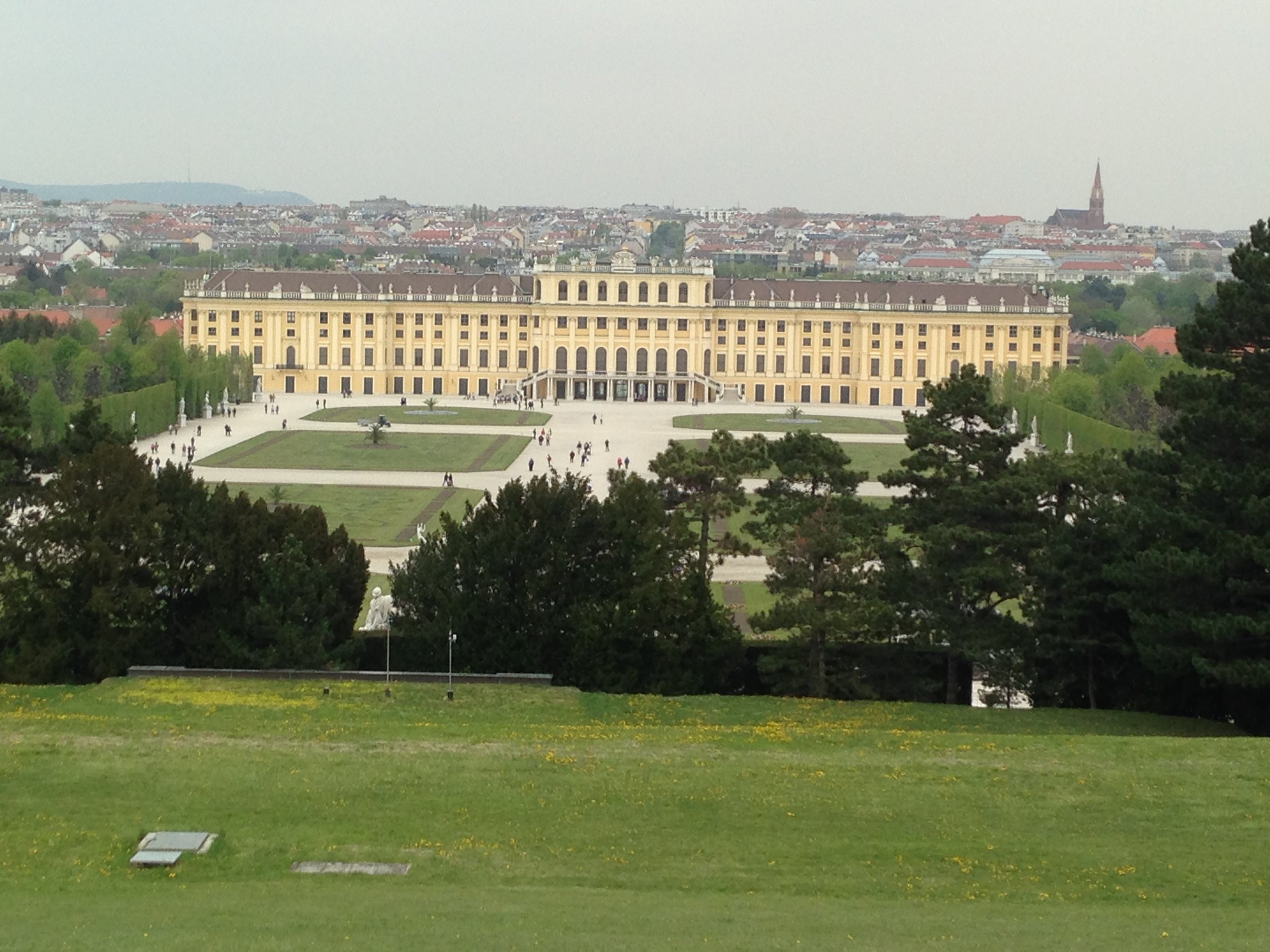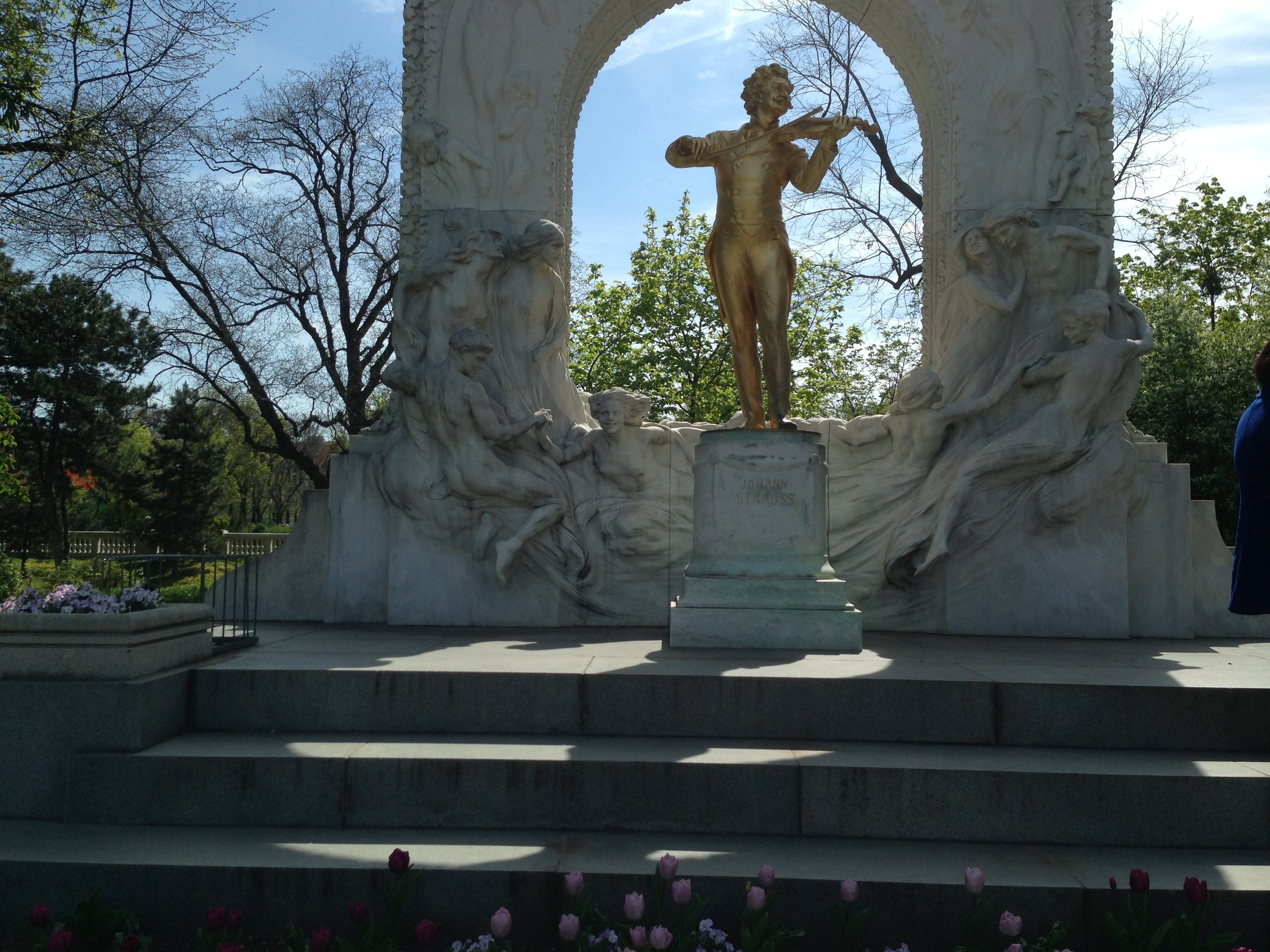Footnotes from Vienna
We flew to Vienna one spring before floods of tourists inundated the city, when the Stadtpark and Volkspark were bursting with jonquils and tulips and lilac scented the air.
Vienna happened to be celebrating several anniversaries that year. The Ring Strasse had been completed 150 years earlier by Emperor Franz Josef I after he had the old city walls and ramshackle buildings torn down to make room for parks and boulevards.
It was also the 200th anniversary of the Congress of Vienna, which changed the borders of many European countries after the Napoleanic Wars. And they were still celebrating the 150th anniversary of the birth of native son Gustav Klimt who had achieved notoriety for paintings like "The Kiss."
Hopping Around Vienna
A three-day Vienna Pass allowed me to hop on and off sightseeing buses and made visits to distant sites like the Schönbrunn Palace (on the periphery of the city) easier.
The Pass included entrance fees to the Hofburg Palace and Sisi Museum, the Albertina Museum, and the Kunsthistoriche Museum. It also included entry to the Spanish Riding School where one could see the famous Lipizzaner Horses.
An elevator ride to the top of the Cathedral's tower gave us a bird's eye view of the old town, and a smaller baroque church nearby, the Peterskirche, offered free organ concerts every day at 3 p.m.
I was particularly interested in seeing Sigmund Freud’s house and the Kaiser Gruft (Imperial Crypt) underneath a Capuchin Church. The Kaiser Gruft contains the bones of 145 members of Hapsburgs, who ruled the country for six centuries.
After paying respects to Maria Theresa and Franz Joseph I, I ducked into the Gulasch Museum, which was actually a restaurant where I could choose from among a dozen varieties of the famous Hungarian stew. My mushroom gulasch was served with a large dumpling and a dollop of sour cream in the center.
Sampling Viennese Treats
Vienna was home to such composers as Beethoven, Mozart, Haydn, Schubert, Bruckner, and Mahler. Though the philharmonic orchestra and opera hall are world famous, it wasn't hard to get last-minute discounted tickets. I bought one for 12 euros and heard Tchaikovsky’s "Eugene Onegin" with the Vienna Philharmonic in a seat with a partially-obstructed view.
A friend and I sampled at least one Viennese cake each day, including the famous Sacher torte and apple strudel.
We found the Sacher Torte at Demel to be little more than dry chocolate cake with a thin layer of frosting on top. Slightly better was a chocolate mousse torte since it had a layer of cake with chocolate mousse in the center and icing on top.
But, we preferred the cakes at Cafe Griensteidl which had delicious soups and a variety of pastries, including an Esterhazy Gateau that had six almond-meringue layers interspersed with a sweet butter cream. The best apple strudel I sampled was in the airport at the busy cafeteria of the Austrian Airlines terminal.
The most innovative restaurant we happened upon was Zum Schwarzen Kameel ("The Black Camel"). The menu changes each month, and in early spring first courses included braised white asparagus and asparagus soup with lobster sauce, along with a tuna tartar with avocado mousse on top.
They had a variety of meat dishes too, but the tender halibut in egg-foam sauce with artichokes and roasted vegetables was so tasty that I went back and ordered it again the next day.
The savvy waiters had strong opinions about which Austrian wines (among the 800 they carry) should be paired with each course. It was a meal and a weekend jaunt to remember.


